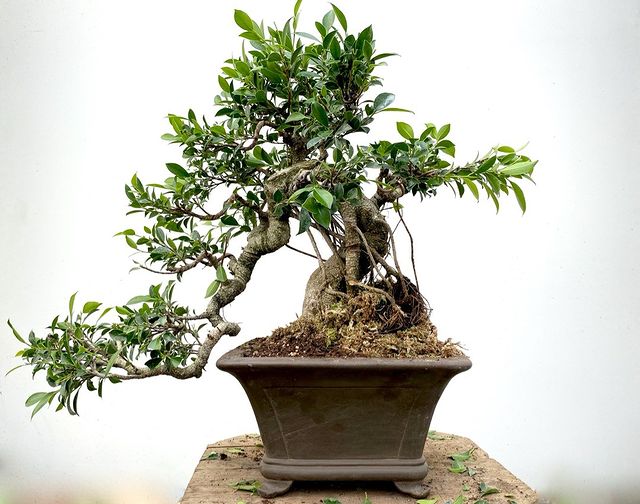Japanese Boxthorn Bonsai trees need regular watering and pruning. Ensure they receive ample sunlight and well-drained soil.
Japanese Boxthorn Bonsai trees, known for their delicate appearance and resilience, are popular among bonsai enthusiasts. These trees thrive in well-drained soil and require consistent watering to maintain their health. Pruning is essential to shape the tree and promote new growth.
They need plenty of sunlight but should be protected from intense midday sun. Regular fertilization during the growing season helps in maintaining their vigor. By following these simple care guidelines, you can enjoy a beautiful and healthy Japanese Boxthorn Bonsai tree that enhances your living space. Proper care ensures the tree’s longevity and aesthetic appeal.
Introduction To Japanese Boxthorn Bonsai
The Japanese Boxthorn has a rich history. It is native to East Asia. People have grown it for centuries. This plant is popular in Japan. The Japanese call it “Kusagi”. It is valued for its beauty.
The Japanese Boxthorn has unique features. It has small, shiny leaves. Its bark is smooth and grey. The tree produces tiny white flowers. These flowers turn into red berries. The berries are attractive but not edible. The tree is hardy and easy to shape.

Credit: gardencomposer.com
Selecting The Right Soil
The soil for a Japanese Boxthorn Bonsai must be well-draining. Use a mix of akadama, pumice, and lava rock. Ensure the soil holds some moisture but does not stay wet.
The ideal pH level for this bonsai is between 6.0 and 6.5. This slightly acidic environment helps the tree absorb nutrients. Regularly check the pH level to maintain the health of the bonsai.
Watering Techniques
The Japanese Boxthorn bonsai needs regular watering. Water the soil when it feels dry. Use enough water to soak the roots. Avoid overwatering to prevent root rot. During hot days, check the soil more often. In cooler weather, reduce the watering frequency.
Adjust watering based on the season. In spring and summer, water more frequently. The tree needs more water in its growing season. In fall and winter, water less often. The soil should stay slightly moist but not wet. Watch for signs of dryness during these months.

Credit: www.bonsaisocietyvictoria.com.au
Pruning And Shaping
Basic tools include bonsai shears and branch cutters. Bonsai shears help with delicate cuts. Branch cutters are for thicker branches. Concave cutters create smoother cuts. Use a root rake for untangling roots. Lastly, have a spray bottle for misting the tree.
Prune the Japanese Boxthorn in spring and summer. This helps the tree grow well. Spring is for heavy pruning. Summer is for light trimming. Always keep an eye on the growth. Remove dead or weak branches first. Shape the tree as desired after pruning. Regular trimming keeps the tree healthy.
Fertilizing Your Bonsai
Bonsai trees need different types of fertilizers. Organic fertilizers are natural and safe. Chemical fertilizers work fast and give quick results. Slow-release fertilizers feed the tree slowly over time. Liquid fertilizers are easy to use and mix with water. Each type helps the bonsai grow strong and healthy.
Applying fertilizers correctly is very important. Always follow the instructions on the package. Liquid fertilizers should be mixed with water and sprayed on the soil. Slow-release fertilizers can be sprinkled on the soil surface. Organic fertilizers are often mixed into the soil. Each method ensures the bonsai gets the nutrients it needs.

Credit: www.bonsaiempire.com
Pest And Disease Management
Japanese Boxthorn can attract many pests. Aphids are small insects that suck sap. Spider mites create webs on leaves. Scale insects appear as small bumps on stems. Caterpillars can chew on leaves. Mealybugs look like small cotton balls. Regular inspection helps in early detection. Use insecticidal soap to treat infestations. Neem oil is also effective. Ensure good air circulation around the plant.
Fungal infections can harm the Japanese Boxthorn. Water the plant in the morning. This allows leaves to dry by evening. Avoid waterlogging the soil. Root rot occurs in poorly drained soil. Ensure the pot has drainage holes. Leaf spots can appear on leaves. Remove affected leaves promptly. Use a fungicide if necessary. Keep tools clean to prevent disease spread.
Repotting Guidelines
The Japanese Boxthorn bonsai tree needs repotting every two years. Spring is the best time for this. The tree should have new growth before repotting. This shows the tree is healthy.
First, carefully remove the tree from its pot. Trim one-third of the roots. Use sharp, clean scissors for this. Next, place the tree in a new pot. Add fresh, well-draining soil. Water the tree thoroughly after repotting. Ensure the tree gets enough light and air.
Seasonal Care Tips
Ensure your Japanese Boxthorn Bonsai thrives by adjusting watering and light exposure seasonally. Prune regularly to maintain shape and health.
Spring And Summer Care
Water the tree regularly. Keep the soil moist but not wet. Prune the branches to shape the tree. Use a balanced fertilizer every two weeks. Place the tree in a spot with full sun. Check for pests like aphids and mites. Use an insecticidal soap if needed.
Fall And Winter Care
Reduce watering during fall. Let the soil dry out between waterings. Move the tree indoors if the temperature drops. Keep it in a cool room with indirect light. Avoid placing it near heating vents. Stop fertilizing during winter months. Prune any dead or damaged branches.
Conclusion
Caring for a Japanese Boxthorn bonsai tree is rewarding. Follow proper watering, pruning, and sunlight guidelines. Regular maintenance ensures a healthy and beautiful bonsai. Enjoy the art and patience involved in bonsai cultivation. With dedication, your Japanese Boxthorn will thrive and become a stunning centerpiece in your collection.

